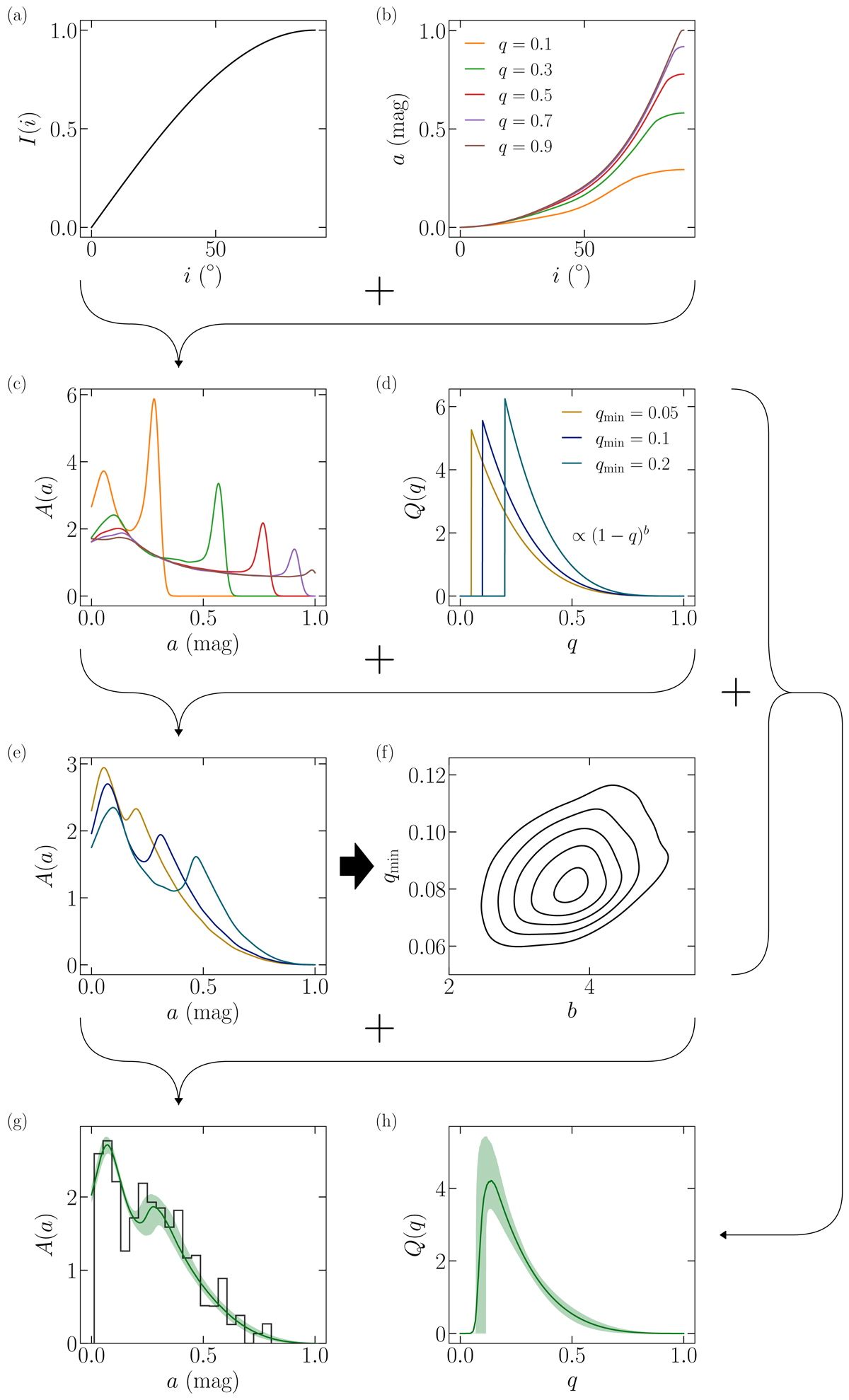Fig. 1.

Download original image
Summary of our method for the inference of the mass-ratio distribution of contact binary stars. (a) Assuming the orbits of contact binary systems are randomly distributed in space, the probability of observing a system with an inclination i is proportional to sin i. (b) By using light-curve synthesis models, we derive the contact binary photometric amplitude a as a function of i for different values of the mass ratio q. (c) By marginalizing out the inclination, we obtain a as a function of q. (d) We approximate the mass-ratio distribution by a power law with index b and a sharp cutoff at the minimum mass ratio qmin. (e) By using the power law to marginalize out q, we construct the full photometric amplitude distribution, with its shape strongly depending on the value of qmin. (f) We apply Bayesian inference to fit the amplitude distribution to a sample of contact binary stars, yielding the posterior distribution of the parameters of the model. (g) We marginalize over the posterior and get the mean amplitude distribution (solid green line) and its 1σ credible interval (green band). (h) Repeating the same procedure, we obtain the mean mass-ratio distribution and its 1σ credible interval.
Current usage metrics show cumulative count of Article Views (full-text article views including HTML views, PDF and ePub downloads, according to the available data) and Abstracts Views on Vision4Press platform.
Data correspond to usage on the plateform after 2015. The current usage metrics is available 48-96 hours after online publication and is updated daily on week days.
Initial download of the metrics may take a while.


